| Botanical Name |
|
| Family |
Celastraceae - The Spike-thorn family. |
| Pronunciation |
jim-no-SPOR-ee-uh buks-ih-FOH-lee-uh |
| Common Name(s) |
English: Common spike-thorn
Afrikaans: Gewone pendoring; Lemoendoring; Stinkblombos
IsiXhosa: Umhlongwe; Umqaqoba
IsiZulu: Ingqwangane; Ubangalala
Sesotho sa Leboa: Sephatwa
|
| Plant Group |
- Shrub A woody plant of relatively low height, having several stems arising from the base and lacking a single trunk; a bush.
|
| Plant Size |
- Very large
| Tree | Over 25m |
| Shrub | Over 4m |
| Perennial/ground cover | Over 1m |
| Bulb | Over 1.2m |
| Succulent | 1.5m to 2m |
- Medium to Large
| Tree | 15m to 20m |
| Shrub | 2m to 3m |
| Perennial/ground cover | 60cm to 75cm |
| Bulb | 60cm to 1m |
| Succulent | 60cm to 1m |
|
| Position |
- Canopy Shade Canopy shade is found below closely grown trees where some light filters through. Ideal for the protection of herbaceous plants.
- Dry Shade Shady areas where soil has poor water retention or are dependent on rain for their moisture needs.
- Light or Dappled Shade Found below trees with sparse, open foliage. Ideal for the protection of herbaceous plants.
- Partial Shade The area is in shade for part of the day and in full sun for part of the day.
- Sun The area is in full sun for all or most of the day, all year round.
|
| General Information |
- Drought Tolerance: High The plant is well adapted to arid conditions; it can survive long periods of drought and high temperatures without extra water.
- Evergreen Plants that have leaves all year round.
- Fragrant / Aromatic These plants posses a strong, usually pleasant odour.
- Frost: Hardy The plant can withstand freezing temperatures or frost without artificial protection.
- Thorns / Spines / Prickles Thorn: A hard, woody, pointed branchlet.
Spine: A modified leaf forming a hard, sharp-pointed outgrowth.
Prickle: A small, sharp-pointed outgrowth growing from the bark of the plant.
- Water Wise Plant species originating from low rainfall regions that require less water to survive and thrive than other plant species.
- Wind Tolerant Plants able to withstand the effect of strong winds.
|
| Specific Information |
Gymnosporia buxifolia is a fast growing shrub or tree with dangerously sharp, tough, and rigid thorns of often exceeding 100 mm in length, making it an ideal plant for impenetrable hedgerows and barrier hedges. The spines are said to have an irritant and toxic effect. The dense clusters of flowers cover the drooping branches but have an unpleasant smell. The shrub is much used by shy, skulking birds for the protection it offers.
|
| Ad Break |
|
| Flowers |
| Description |
small flowers in dense clusters along the branchlets
|
| Season |
- Spring to Autumn Plants will seldom bloom for the entire season as given in the list, but should flower during a period within these parameters.
|
| Colour |
|
| Growth Rate |
- Moderate to Fast Specifying growth rate can be very misleading as there is considerable variation of growth rate depending on type and species of plant, available water, supplementary feeding, mulching and general care, as well as the plants suitability and adaptability to the garden environment.
|
| Plant Uses |
- Attracts bees, butterflies or other insects This plant attracts insects which can be food for birds or other creatures in your garden.
- Attracts Birds This plant will attract birds.
- Barrier Plant A very thorny shrub, tree or scrambler that can be used to create an impenetrable barrier.
- Boundary A plant useful for planting around the edges of the property to form a green or colourful backdrop, an impenetrable hedge, to hide walls or create privacy.
- Hedge Suitable trees or shrubs planted relatively close together so that the branches intertwine to create a barrier. This can be formal – the plants are regularly trimmed to produce a neat shape, or informal – the plants are left to themselves to create a natural hedgerow.
- Pioneer for new gardens A very fast growing plant, able to withstand hardship, that can be used to populate land that has recently been cleared of natural vegetation. These plants pave the way for slower-growing species by adding nutrients to the soil and creating leaf litter.
- Suitable for coastal gardens Plants adapted to dry, sandy soil, forceful wind, limited rainfall and intense sunlight.
- Wild Garden An indigenous garden planted for the benefit of wildlife and birds. Provides food, water, a variety of mini-biomes and no poisonous chemicals are used.
|
| Distribution and Habitat |
throughout most of South Africa except the Northern Cape Province, in dry areas, along forest fringes and thorn-veld, and along roads and in disturbed areas
|
| Planting Suggestions |
Plant in prepared holes with some compost and bone meal and mulch well. Water regularly until well established then reduce water until the plant is thoroughly hardened and water wise. Unless you require fast growth this shrub will need no more attention other than an occasional pruning if necessary.
|
| Medicinal Uses |
The spines have been used as needles and for extracting the thorns of other plants from the skin.
|
| Ad Break |
|


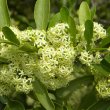
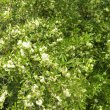
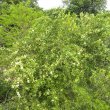
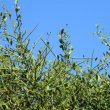
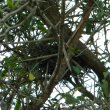


Comments
Pendoring
Would like to know if this tree / Schrub has any feeding value for game and cattle?
Feed value of Pendoring
Hi Fanie
From my research, the only animals I found mentioned that utilise this plant for feeding were Giraffe and elephant. I imagine that the Black Rhino would also be able to feed from this plant. My feeling is that cattle and other game do not have the capacity to cope with the vicious thorns of the Pendoring, namely tough, leathery mouth parts, and height, so that they can reach the softer material higher up.
Regards
Lorraine
Gymnosporia buxfolia
In December 24 2014, I and my family, together with my baby, a 10 month old at that time, visited Tzaneen from Swaziland. When we arrived she was happy and playing. The following day she was down, not playing, had a high temperature, had lost her appetite and was vomiting. We took her to the clinic. She got an injection, panado and an antibiotic. There was no difference and the temperature went even higher. I was so stressed.
A neighbour mentioned that the leaves of this plant usually helps. She picked about five of the leaves, crushed them and put them in about a cup of pure water. We gave the child two spoons. After two hours the child started playing and she passed such watery stools that all she was wearing was dirty. She completely had to take a nice bath, but after that my baby was fine. We continued with our holiday.
Hi Nelistaar
Hi Nelistaar
Thanks for your comment and information. There is so much we do not know about the natural healing effect of the plants around us. I'm glad to hear that you could go ahead with your holiday.
Kind regards
Lorraine
Discuss this plant
Share knowledge, ask a question or give an experience.